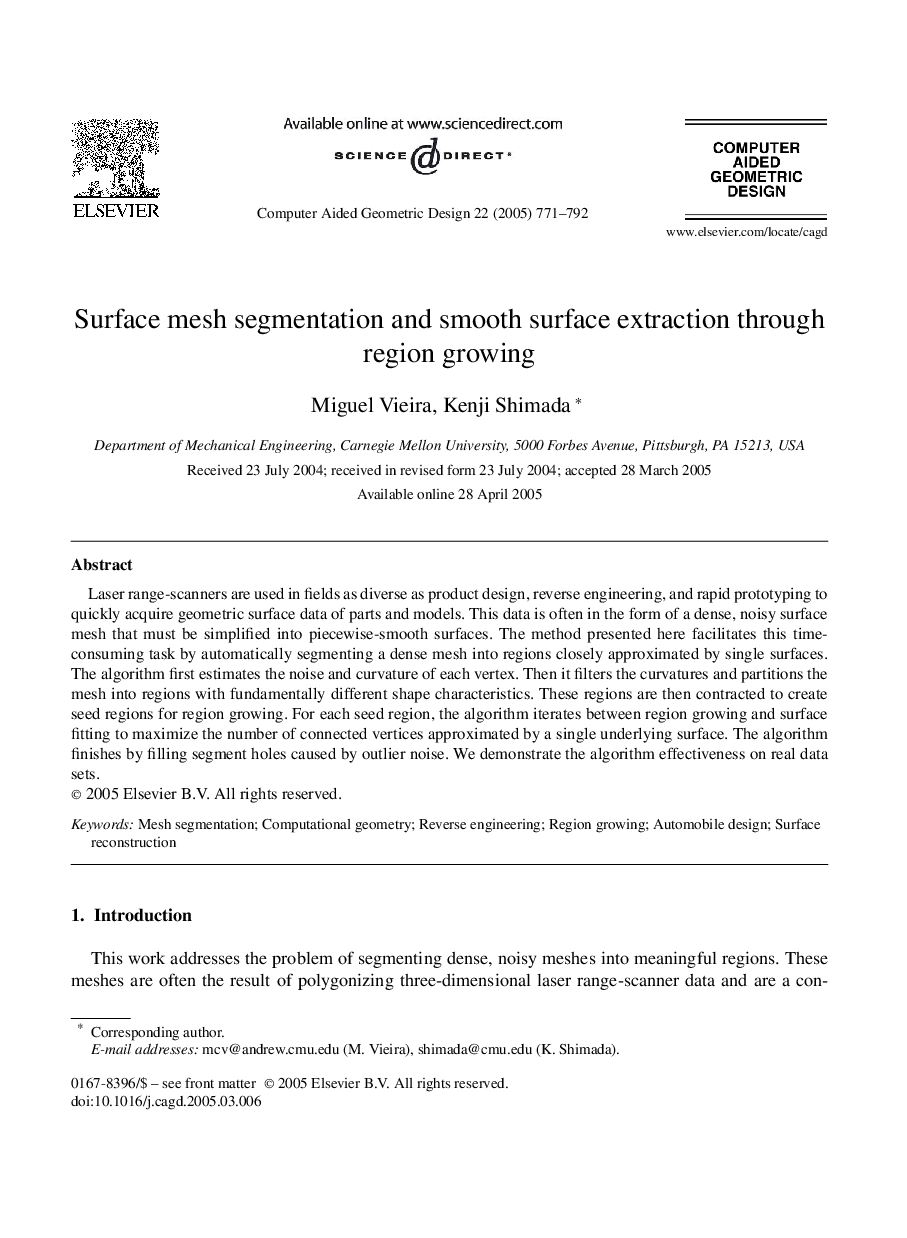| Article ID | Journal | Published Year | Pages | File Type |
|---|---|---|---|---|
| 10335833 | Computer Aided Geometric Design | 2005 | 22 Pages |
Abstract
Laser range-scanners are used in fields as diverse as product design, reverse engineering, and rapid prototyping to quickly acquire geometric surface data of parts and models. This data is often in the form of a dense, noisy surface mesh that must be simplified into piecewise-smooth surfaces. The method presented here facilitates this time-consuming task by automatically segmenting a dense mesh into regions closely approximated by single surfaces. The algorithm first estimates the noise and curvature of each vertex. Then it filters the curvatures and partitions the mesh into regions with fundamentally different shape characteristics. These regions are then contracted to create seed regions for region growing. For each seed region, the algorithm iterates between region growing and surface fitting to maximize the number of connected vertices approximated by a single underlying surface. The algorithm finishes by filling segment holes caused by outlier noise. We demonstrate the algorithm effectiveness on real data sets.
Keywords
Related Topics
Physical Sciences and Engineering
Computer Science
Computer Graphics and Computer-Aided Design
Authors
Miguel Vieira, Kenji Shimada,
